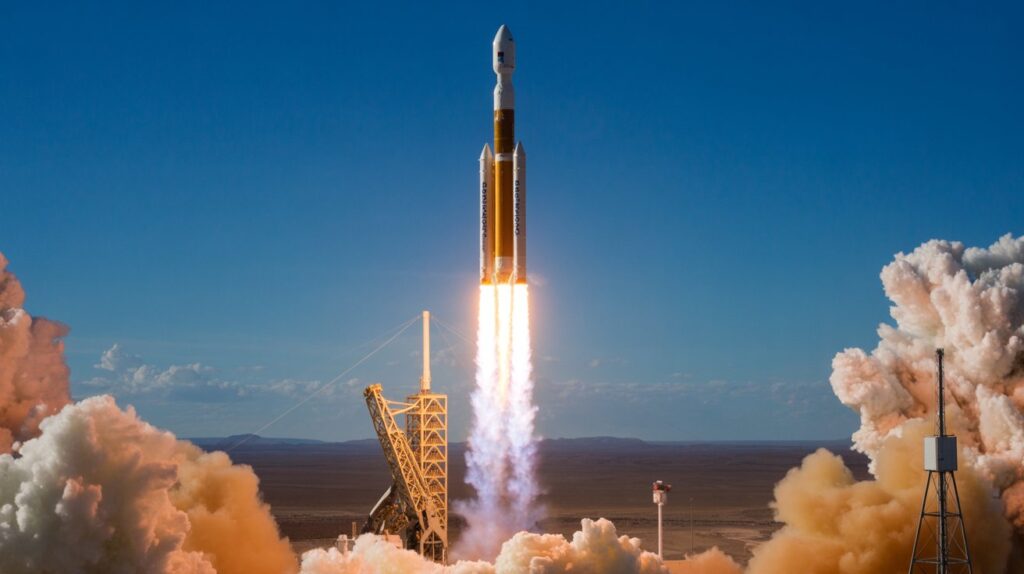The satellite launch vehicle industry is evolving into one of the most dynamic segments of the global space economy. With the increasing reliance on satellite-based services—ranging from global communications and navigation to environmental monitoring and defense applications—demand for efficient, reliable, and cost-effective launch solutions has never been greater.

Market Overview
The Satellite Launch Vehicle Market is estimated to be USD 15.7 billion in 2022 and is projected to reach USD 29.1 billion by 2027, at a CAGR of 13.1% from 2022 to 2027. This industry is undergoing a significant transformation, driven by innovations in reusable rocket technology, the growing popularity of small satellite constellations, and rising investments in both government and commercial space programs. As more industries recognize the strategic advantages of satellites, the need for diversified and flexible launch solutions is creating substantial opportunities for both established aerospace leaders and new market entrants.
Download PDF Brochure @
https://www.marketsandmarkets.com/pdfdownloadNew.asp?id=115959224
Key Growth Drivers
- Expansion of Small Satellite Constellations
Small satellites—particularly those weighing under 500 kg—are enabling faster, more affordable access to space. They are being deployed for broadband connectivity, Earth observation, climate monitoring, and scientific research. Their compact size, cost-efficiency, and shorter development cycles make them a preferred choice for emerging and established operators alike. - Reusable Launch Vehicle Technology
Reusability is reshaping the economics of space access. Companies like SpaceX and Blue Origin are at the forefront of developing vehicles that can be launched, recovered, and reused multiple times. This not only lowers per-launch costs but also increases launch frequency, enabling a more responsive and sustainable space industry. - Rising Space Tourism and Commercial Space Activities
Beyond traditional satellite launches, new markets such as space tourism and private exploration missions are expanding the demand for advanced launch solutions. This diversification strengthens the long-term growth potential of the industry.
Segment Insights
- By Payload Capacity:
The under-500 kg segment is expected to witness the fastest expansion as the CubeSat and nanosatellite revolution continues to accelerate. - By Vehicle Type:
Small launch vehicles (<350,000 kg) are seeing heightened demand due to their ability to target specific orbits and enable rapid deployment, a critical factor for defense, research, and commercial clients. - By Region:
The Asia Pacific region, led by China and India, is emerging as the powerhouse of satellite launch capabilities. These nations are expanding infrastructure, investing in indigenous technology, and offering competitive commercial launch services. Emerging players like Indonesia and Singapore are also making strategic moves to capture market share.
Competitive Landscape
The market is highly competitive, with major players including SpaceX, United Launch Alliance, Northrop Grumman, Blue Origin, and Mitsubishi Heavy Industries. These companies are advancing propulsion systems, modular vehicle designs, and mission flexibility while forming strategic partnerships to secure government and commercial contracts.
Future Outlook
The global satellite launch vehicle market is set to benefit from the rapid commercialization of space, where cost-effective, adaptable, and mission-ready solutions will be in high demand. Companies that focus on advanced propulsion technologies, rapid turnaround capabilities, and tailored launch services will be best positioned to capture a significant share of this expanding industry.
As the race to democratize space access accelerates, the next decade will be defined by increased competition, new entrants, and transformative innovations that will make satellite deployment faster, cheaper, and more accessible than ever before.
